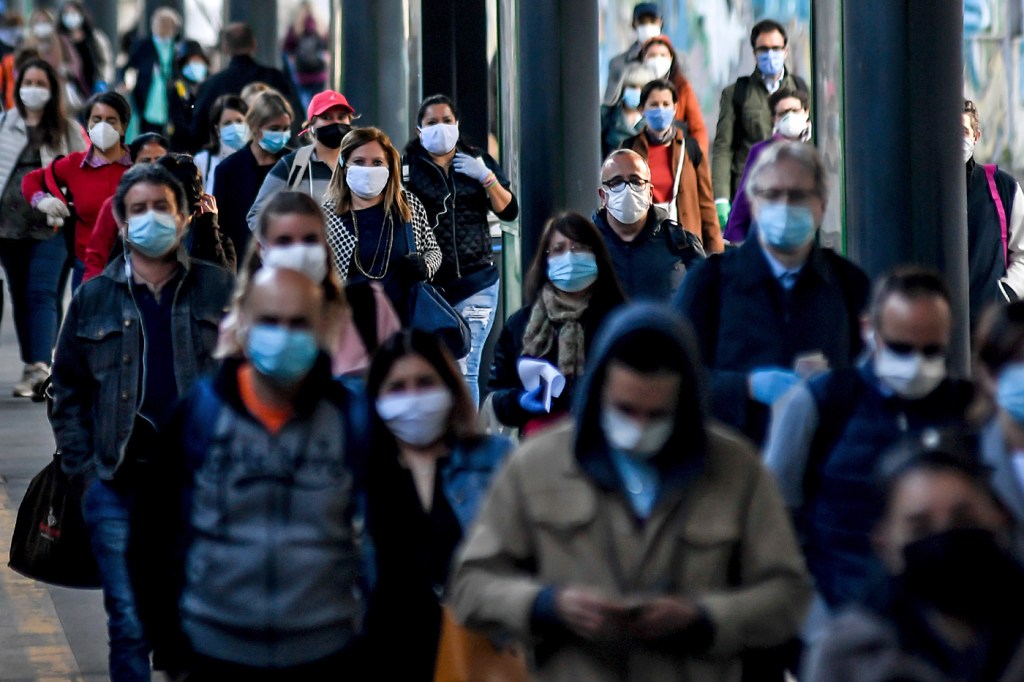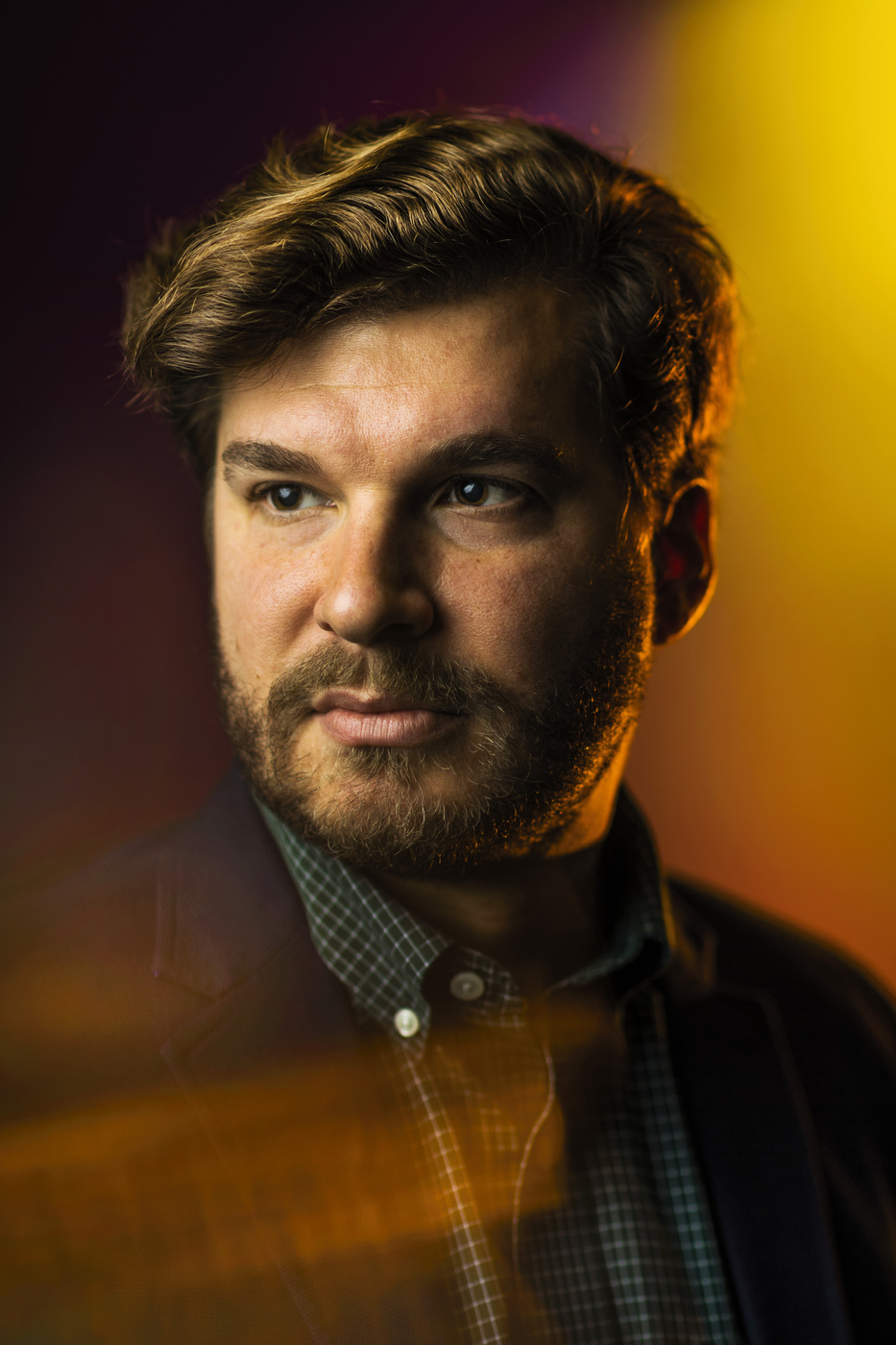Why does COVID-19 hit hard and fast in some places, but not others?

Over the last ten months, epidemics of COVID-19 have taken a variety of forms. In places like Northern Italy, the disease hit hard and fast. In other areas it seemed to move more slowly through the population.
According to new research from an international collaboration of scientists, including researchers in Northeastern’s Network Science Institute, many of these differences can be attributed to how tightly knit and interconnected these communities are.

Samuel V. Scarpino. Photo by Adam Glanzman/Northeastern University
“The way populations are structured matters quite a bit in terms of the potential risk for sharp, intense epidemics, as compared to broader, slower-burning epidemics,” says Samuel Scarpino, an assistant professor in Northeastern’s Network Science Institute who helped lead the study.
And our likelihood of catching or spreading the virus, he says, depends more on the infection rate in our immediate vicinity than on the infection rate in our state or region.
The researchers zoomed in on the small-scale mobility patterns in Italy and China, two locations with early outbreaks that have had time to run their course.
They found that areas with small, tightly knit communities—where people mixed with the same neighbors in schools, stores, and other gathering places—had sharper, more intense epidemics. This type of epidemic is more likely to overwhelm a local healthcare system as lots of people get sick very quickly.
Larger urban areas, which are often conglomerates of loosely-connected neighborhoods, had more drawn-out epidemics. Neighborhoods might experience a sharp rise in infections, but the infection rate overall would increase more slowly. It would also decrease more slowly, since people traveling between neighborhoods could reintroduce the virus, making it hard to eliminate completely.
“The models would predict that it’s going to be very difficult to drive COVID locally extinct from a place like Boston,” Scarpino says. “And that, of course, means that we’re going to be dealing with this in some capacity for a long time. That’s going to have economic consequences, mental health consequences, and educational consequences.”
After validating their model using data from China and Italy, the researchers used it to make projections globally about what areas might be more at risk for these sharp epidemic spikes, as opposed to slower burning outbreaks.
Their projections showed that rural areas, especially those that were near a fairly large city, had a particularly high risk for large, intense outbreaks that could overwhelm their healthcare systems. But it’s not strictly a rural problem. While a city as a whole might have a lower risk of an intense outbreak, many cities have neighborhoods and communities within them that are at a much higher risk.
“Public health measures are often focused on ‘flattening the curve,’” says Moritz Kraemer, a research fellow at the University of Oxford and lead author on the study. “But this research shows that what that curve looks like will be very different from city to city, town to town, or even neighborhood to neighborhood.”
And when the virus shows up in one of these areas, public health officials need to take action fast. Scarpino points to an outbreak in rural Maine, which started at a wedding in early August and rapidly spread through the community.
“For rural areas that haven’t had a COVID outbreak, it’s more likely to be just because [the virus] hasn’t shown up yet,” Scarpino says. “One of the things our models suggest is—and this is entirely consistent with what happened in rural Maine—that if the cases show up, you have to be ready to respond really, really quickly. Because it can sweep through the population incredibly fast.”
For media inquiries, please contact Marirose Sartoretto at m.sartoretto@northeastern.edu or 617-373-5718.





